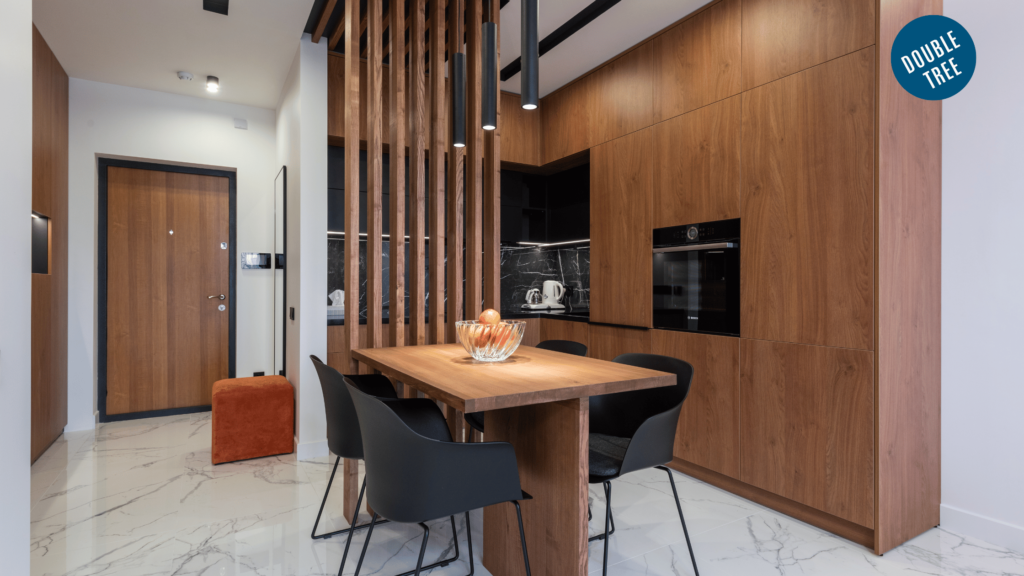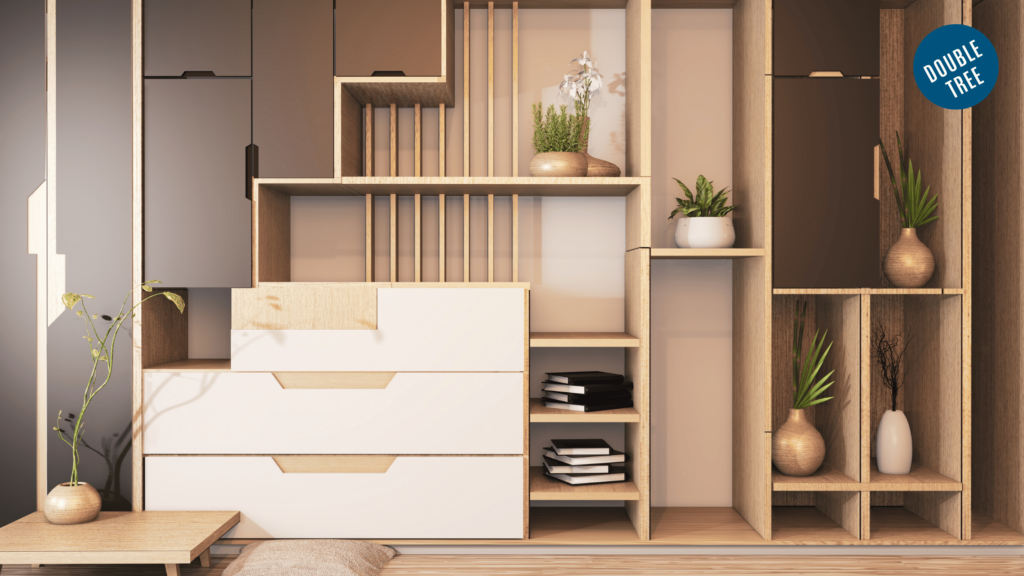Modular furniture has become increasingly popular among homeowners and businesses in today’s dynamic interior design landscape.
As its popularity grows, many potential buyers wonder: Is modular furniture comfortable? This comprehensive guide delves into modular furniture, examining its comfort factor, advantages, and potential challenges to help you make an informed decision.
Modular Furniture
Before we explore the comfort aspect, it’s essential to understand modular furniture and why it has gained such traction in recent years.
Modular furniture refers to pieces designed with interchangeable components arranged in various configurations. This adaptability allows users to customize their furniture to fit specific spaces and needs.
From sofas and shelving units to office workstations, modular design has found its way into nearly every category of furniture.
Key Characteristics of Modular Furniture
Modular furniture stands out due to several unique features:
- Flexibility: Easily rearranged to suit changing needs or spaces
- Scalability: Can be expanded or reduced by adding or removing modules
- Multifunctionality: Often serves multiple purposes, such as storage and seating
- Space efficiency: Designed to maximize the use of available space

Common Materials Used
The materials used in modular furniture play a crucial role in both its longevity and comfort level. Manufacturers often combine materials to balance durability, aesthetics, and comfort. Some common materials include:
- Engineered wood (MDF, particleboard)
- Solid wood
- Metal (steel, aluminium)
- Plastic and polymer composites
- Upholstery fabrics (for seating elements)
Comfort Factors in Modular Furniture
Several factors contribute to the comfort of modular furniture. Let’s examine the key elements contributing to a comfortable seating or lounging experience.
Ergonomic Design Considerations
Many modular furniture designers prioritize ergonomics to ensure comfort, especially for pieces intended for prolonged use.
This focus on ergonomics often includes contoured seating surfaces that support the body’s natural curves, adjustable components to accommodate different body types and postures, and proper lumbar support in seating modules.
Adjustability Features
One of the standout comfort features of modular furniture is its adjustability. Users can often customize their furniture to suit their specific comfort needs. This may include:
- Movable backrests and armrests
- Adjustable seat depths
- Interchangeable cushions with varying firmness levels

Quality of Materials and Construction
The comfort of modular furniture heavily depends on the quality of materials used and the construction techniques employed. High-density foams for cushioning provide better support and longevity, while durable upholstery fabrics enhance comfort and wear resistance.
Solid construction ensures stability and reduces unwanted movement or noise.
Pros of Modular Furniture Comfort
Modular furniture offers several advantages when it comes to comfort:
- Personalized Configuration: Users can arrange modules to create their ideal seating or lounging position. Different family members can customize their own spaces within a shared furniture piece.
- Adaptability to Different Spaces and Situations: Modular furniture can be easily reconfigured to accommodate various room layouts or functions. It can be adjusted for different activities, such as transitioning from lounging to working.
- Easy Maintenance and Replacement: Individual modules can be cleaned or replaced without affecting the entire piece. Worn-out components can be swapped out, extending the furniture’s lifespan and comfort.

Potential Comfort Challenges
While modular furniture offers many comfort benefits, it’s important to consider potential drawbacks:
- Assembly Quality Issues
- Improper assembly may lead to instability or misalignment.
- Overall comfort can be affected by poor assembly.
- Some users find visible seams or connections between modules distracting.
- Design and Material Limitations
- Some modular designs prioritize versatility over deep, sink-in comfort.
- Certain materials used for durability might not provide the plushness some users desire
- The balance between functionality and comfort can vary between different modular furniture pieces.
- Breaking-in Period
- Some modular pieces, like many furniture types, may require time to reach optimal comfort.
- Initial stiffness in new foam or upholstery materials is common.
- Comfort may improve over time as materials soften with use.
- Potential for Wear and Tear
- Frequently rearranged modules might show signs of wear more quickly.
- Connections between modules could weaken over time if not properly maintained.
- Some materials may not age as gracefully as traditional furniture.
- Learning Curve for Optimal Configuration
- Users need time to find the most comfortable arrangement.
- Trial and error may be necessary to achieve the best comfort for different activities.
- Frequent reconfiguration could be inconvenient for some users.
Tips for Choosing Comfortable Modular Furniture
To ensure you select modular furniture that meets your comfort needs, consider the following tips:
Factors to Consider When Shopping
When shopping for modular furniture, keep these points in mind:
- Intended use: Determine whether the furniture will be for occasional or daily use
- User preferences: Consider the comfort preferences of all potential users
- Room context: Think about how the furniture will fit into your existing space and lifestyle

Importance of Trying Before Buying
Whenever possible, test the furniture in person before making a purchase. Sit, lie down, or use the furniture as you would at home to assess comfort.
Consider factors like seat depth, cushion firmness, and back support.
Reading Reviews and Seeking Recommendations
Look for user reviews that specifically mention comfort and long-term satisfaction. Consult interior design professionals or furniture experts for recommendations.
Feel free to ask friends or family members about their experiences with modular furniture.
Conclusion
After thoroughly examining the comfort factor of modular furniture, we see that it has the potential to be very comfortable. The key lies in choosing high-quality pieces, understanding your specific needs, and taking advantage of the customization options available.
Modular furniture’s greatest strength in terms of comfort is its adaptability. It allows users to create personalized configurations that cater to their unique preferences and body types.
While there may be some challenges, such as assembly quality and breaking-in periods, these are often outweighed by the benefits of flexibility and long-term comfort.





